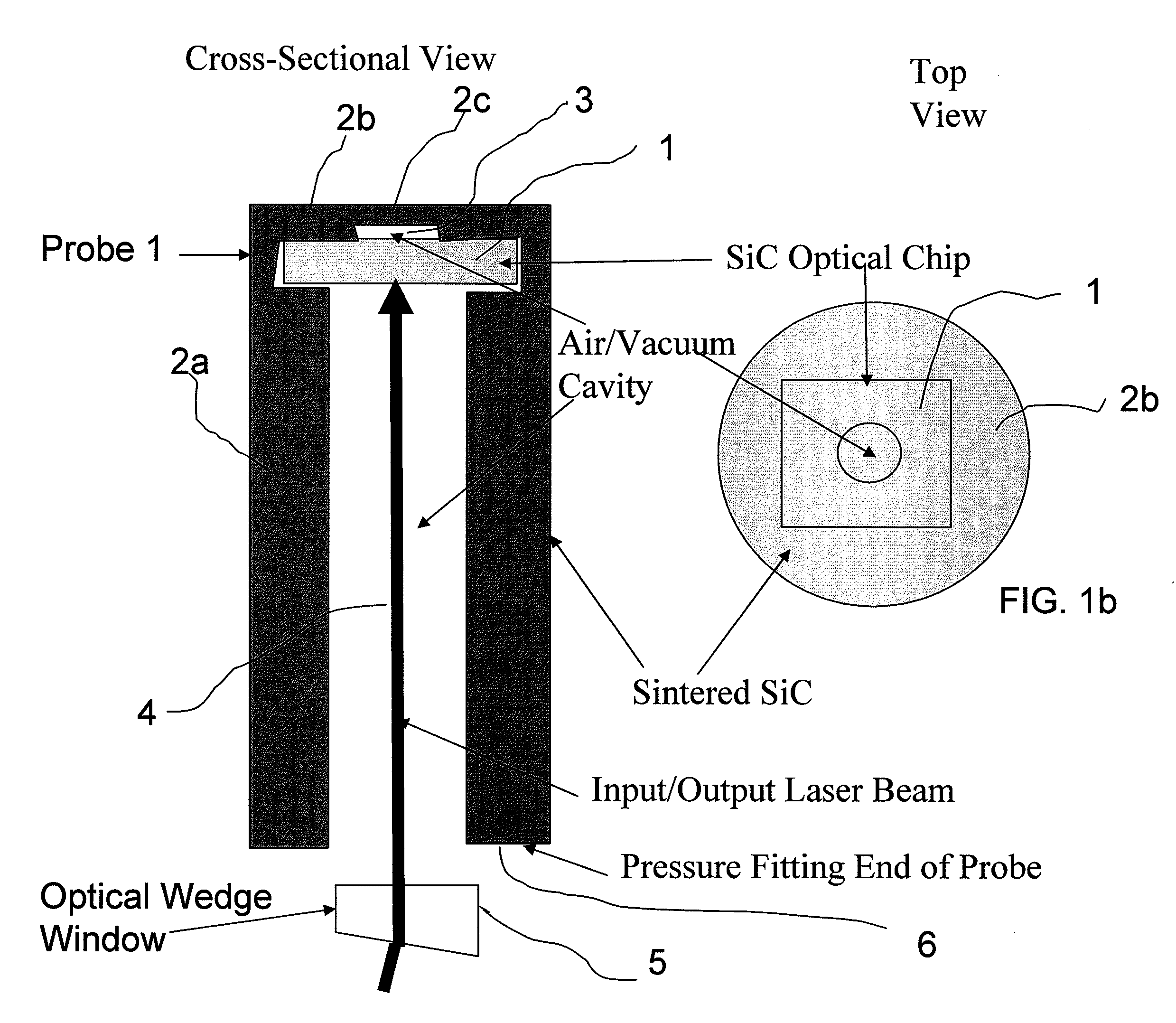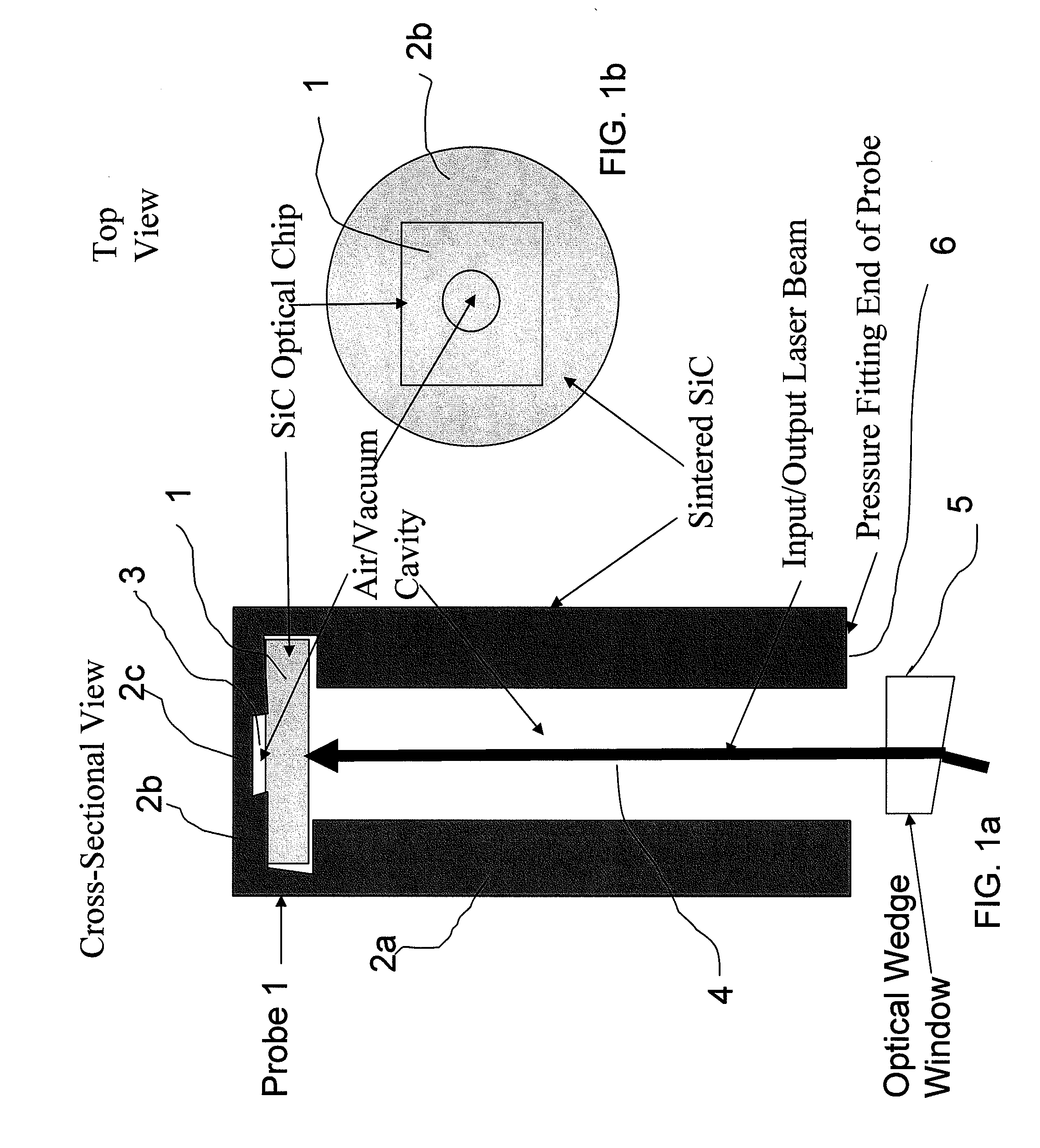Extreme Temperature Robust Optical Sensor Designs And Fault-Tolerant Signal Processing
a robust, optical sensor technology, applied in the direction of optical radiation measurement, instruments, heat measurement, etc., can solve the problems of limited life-time, high engineering difficulty in realizing a sensor for such hazardous environments, and high cost of energy consumption, so as to improve the sensitivity of temperature measurement and eliminate the dual-temperature ambiguity
- Summary
- Abstract
- Description
- Claims
- Application Information
AI Technical Summary
Benefits of technology
Problems solved by technology
Method used
Image
Examples
Embodiment Construction
[0021]Accuracy, reliability, and long-life times are much sought after and essentially critical parameters for sensors measuring temperature and pressure in gas turbines of coal-fired power plants. Recently, N. A. Riza et. al has proposed and demonstrated the concept of a new hybrid class of sensor [see N. A. Riza, M. A. Arain, F. Perez, “Harsh Environments Minimally Invasive Optical Sensor using Freespace Targeted Single Crystal Silicon Carbide,” IEEE Sensors Journal, Vol. 6, No. 3, pp. 672-685, June 2006] that intrinsically contains the scientific and engineering fundamentals to meet the accuracy, reliability, and long-life time features sought by gas turbine manufacturers. The front-end that is optically read to enable a sensing operation is made of a thick (e.g., 400 microns) single crystal SiC material that is optically flat and mechanically robust for handling high (e.g., 160 atms) pressures and high temperatures (e.g., 1600° C.). The SiC material itself is robust to chemical ...
PUM
 Login to View More
Login to View More Abstract
Description
Claims
Application Information
 Login to View More
Login to View More - R&D
- Intellectual Property
- Life Sciences
- Materials
- Tech Scout
- Unparalleled Data Quality
- Higher Quality Content
- 60% Fewer Hallucinations
Browse by: Latest US Patents, China's latest patents, Technical Efficacy Thesaurus, Application Domain, Technology Topic, Popular Technical Reports.
© 2025 PatSnap. All rights reserved.Legal|Privacy policy|Modern Slavery Act Transparency Statement|Sitemap|About US| Contact US: help@patsnap.com



